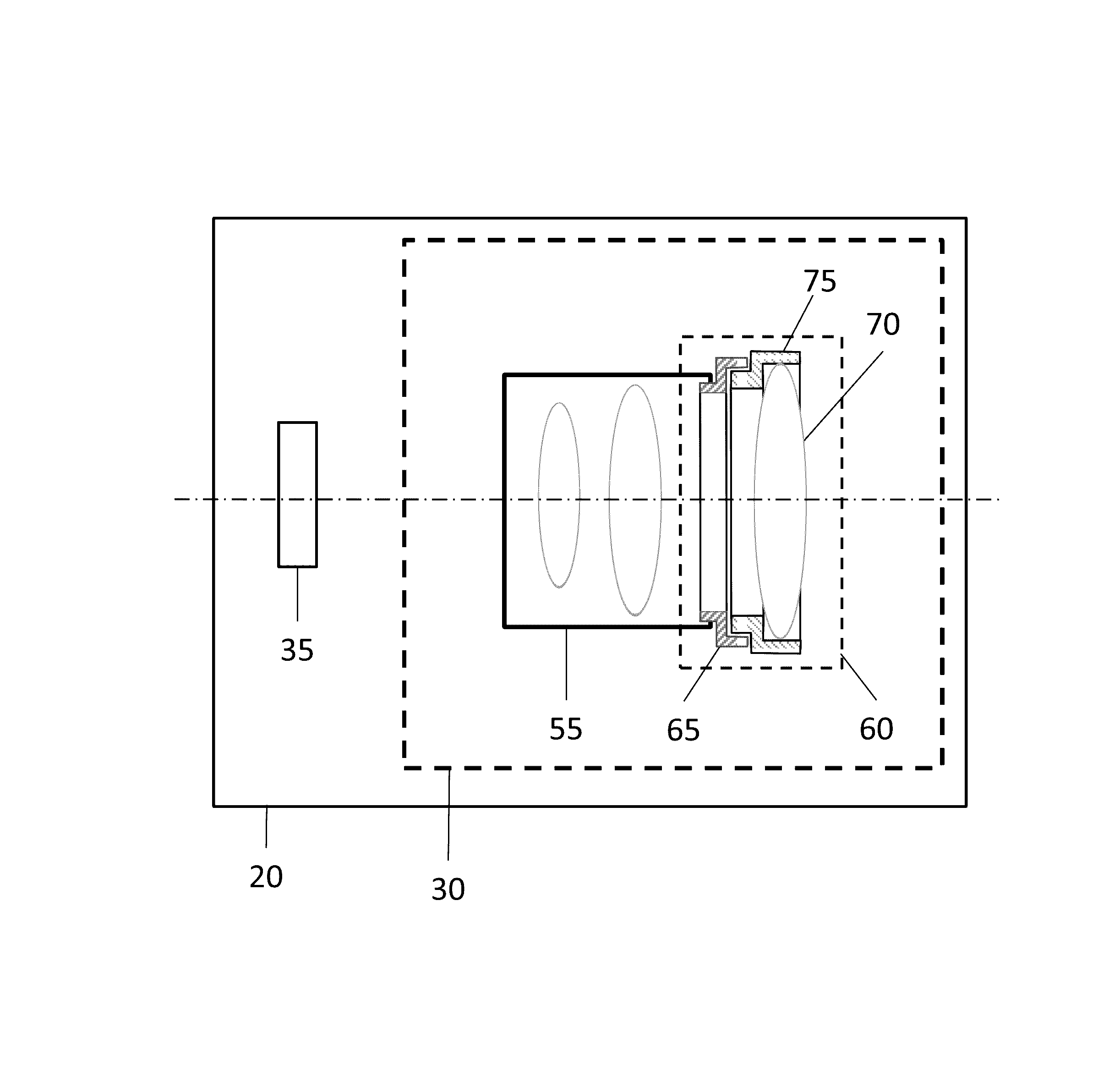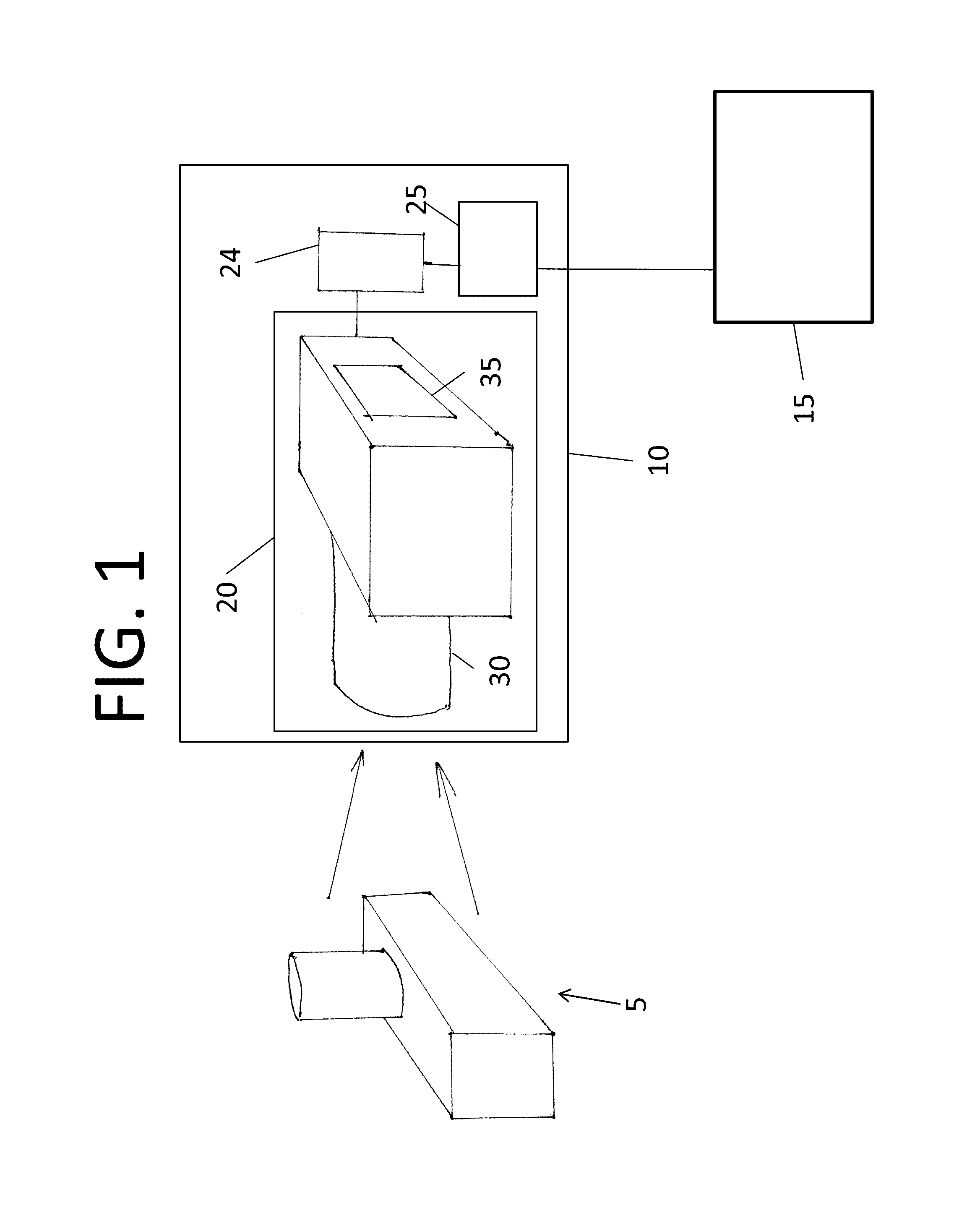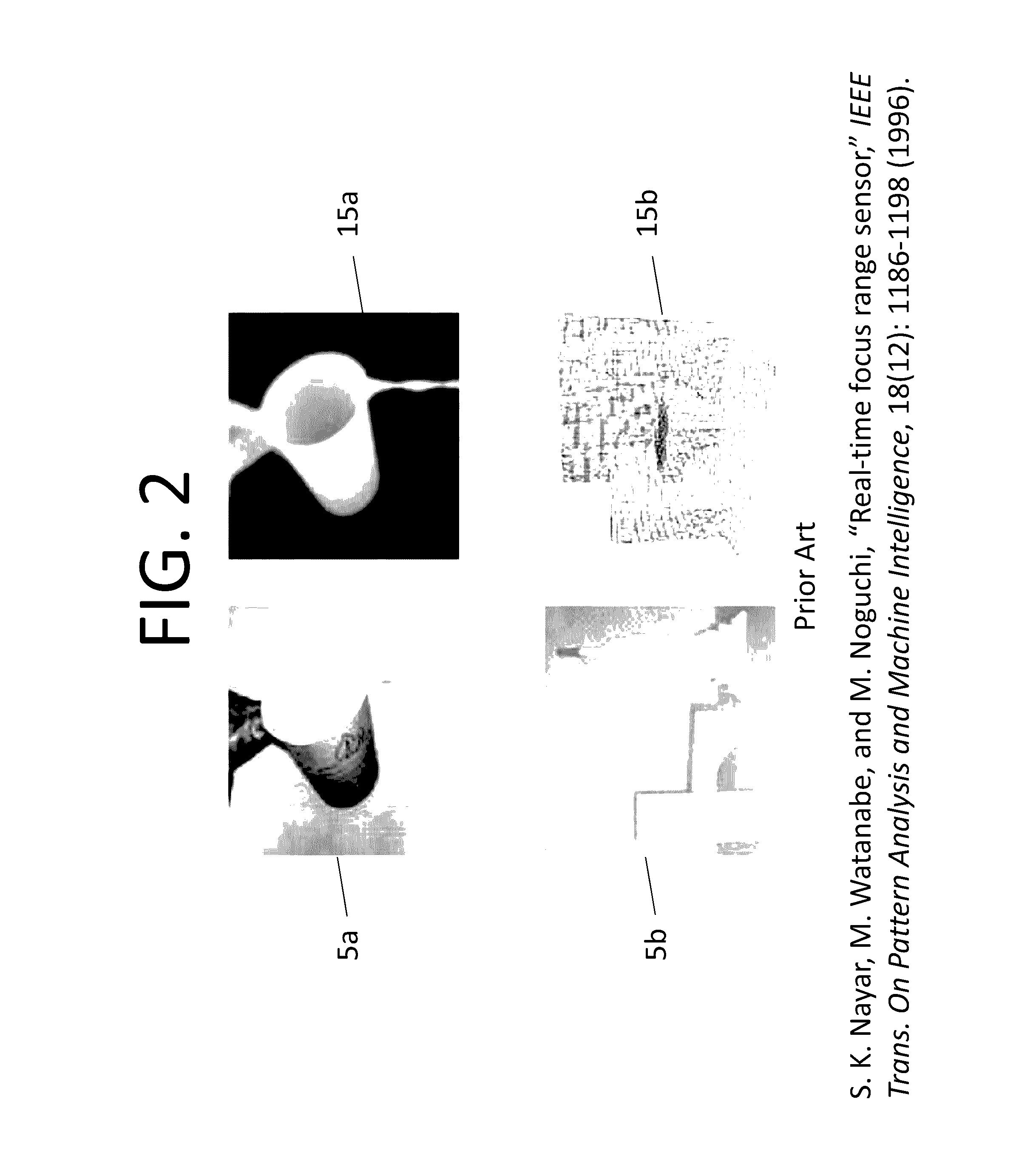Astigmatic depth from defocus imaging using intermediate images and a merit function map
a technology of merit function and depth, applied in the field of depth from defocus optical apparatus, can solve the problems of insufficient depth accuracy, infrequent depth data, and high cost of certain applications
- Summary
- Abstract
- Description
- Claims
- Application Information
AI Technical Summary
Problems solved by technology
Method used
Image
Examples
Embodiment Construction
[0041]Referring to FIG. 1, in a typical embodiment of the astigmatic rangefinder, a rangefinder 10 images a scene 5 to produce at least one depth map 15. The rangefinder 10 has a depth camera 20 and a processing system 25. The depth camera 20 has imaging optics 30 and a sensor 35.
[0042]The depth camera 20 produces image data 24 (alternatively, an “input image”) that is made available to the processing system 25.
[0043]FIG. 2 illustrates scenes and depth maps as generated by an existing rangefinder. The top row shows an example of a scene 5a of liquid being poured out of a container and the corresponding depth map 15a. Usually, a depth maps is a two-dimensional scalar array in which each scalar corresponds to a distance. For example, a value near 0 indicates “near” and a value near 255 indicates “far.” It is convenient to depict depth maps graphically, as shown by the exemplary depth map 15a. In this case, “near” is rendered in white, intermediate distances are rendered in gray, and “...
PUM
 Login to View More
Login to View More Abstract
Description
Claims
Application Information
 Login to View More
Login to View More - R&D
- Intellectual Property
- Life Sciences
- Materials
- Tech Scout
- Unparalleled Data Quality
- Higher Quality Content
- 60% Fewer Hallucinations
Browse by: Latest US Patents, China's latest patents, Technical Efficacy Thesaurus, Application Domain, Technology Topic, Popular Technical Reports.
© 2025 PatSnap. All rights reserved.Legal|Privacy policy|Modern Slavery Act Transparency Statement|Sitemap|About US| Contact US: help@patsnap.com



